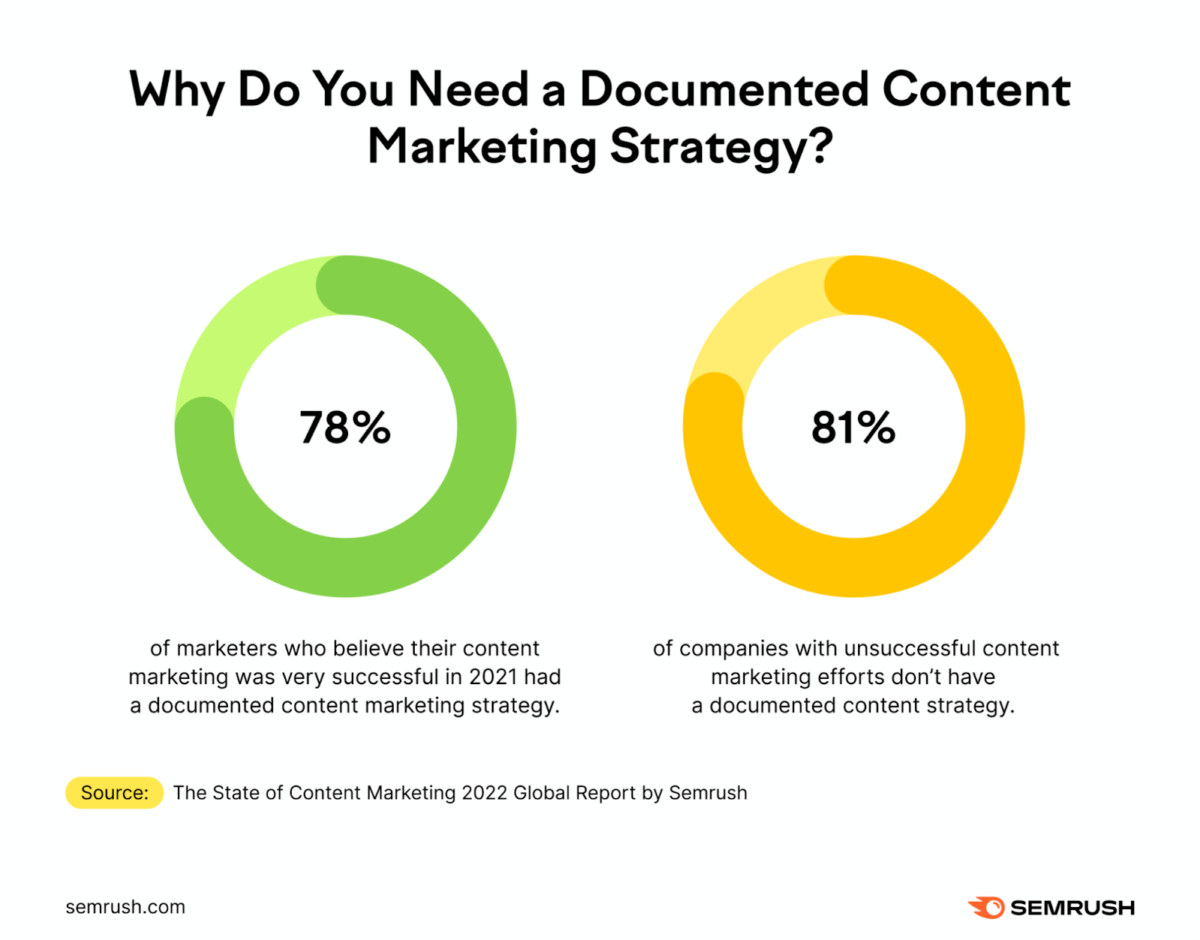
How to Come Up with a Strategic Marketing Plan for 2024
If your marketing team is like most, the approach of a new year gets you thinking about what you want to accomplish for your organization in the months ahead. To get there successfully, you need a strategic marketing plan to outline your strategies, tactics, and timelines.
Companies with a documented plan are significantly more likely to reach their goals. But what should your plan actually include? How do you develop it?
In this guide, we’ll walk you through every step. From setting goals to defining audiences to building strategies and more, you’ll finish this article with actionable ways to build a strategic plan that can move your company forward.
Quick Takeaways:
- Key first steps for every strategic marketing plan are to define your goals and identify your target audiences.
- Performing a competitive analysis and evaluating your current marketing efforts allow you to understand where you stand before you create a plan for the future.
- Your strategic marketing plan should include key strategies around communication channels, campaigns, technologies, targeting tactics, content, and events.
- Creating a documented action plan keeps your strategies on track and your teams accountable.
Understand Your Business Objectives and Target Audience
There are two fundamental pieces to your strategic marketing plan puzzle: key objectives and target audience. You must understand both before you develop strategies and action plans for your marketing team.
As a first step, ask yourself: What do we want to achieve with this plan? Maybe it’s increasing revenue, expanding into a new market, increasing brand awareness, or launching a new product. These are just a few examples.
No matter what your objectives are, take time to define them and make them measurable so that you can track progress and demonstrate success. Frameworks like SMART goals (defined in the video below) are helpful to this end.

Once you have your goals in place, define your target audiences. Two frameworks valuable in this step are ideal customer profiles (ICPs) and buyer personas. The former describes the types of organizations best fit to purchase your solutions, and the latter describes the people within those organizations who make purchase decisions.

Build your ICPs and personas based on needs and motivations—the things that drive buying action at both the company and individual level.
Once you have your objectives and audiences defined, you have the foundation in place to evaluate your current marketing efforts and create a smarter strategic plan for the future.
Assess Your Current Marketing Efforts
Next, review your previous marketing campaigns and evaluate their effectiveness. Look at the data and metrics to determine which campaigns were successful in reaching your goals and which ones fell short. This will provide valuable insights into what works and what doesn’t for your next strategic marketing plan.
Be sure to also analyze your competitors’ marketing strategies. Study their tactics, messaging, and channels to identify any gaps or opportunities in the market that you can leverage. By understanding what your competitors are doing well or where they may be lacking, you can fine-tune your own marketing approach to stand out and differentiate yourself.
A table chart with numerical ratings by category (as seen below) is a simple but effective way to execute the competitive analysis step.

Finally, evaluate your own current marketing channels and their performance, including SEO, social media, email, and paid advertising.
Analyze metrics like engagement, conversion rates, and ROI to determine which channels are driving the best results for your business. Consider reallocating resources to the most successful channels or exploring new ones that align with your target audience.
Develop Key Marketing Strategies
Based on the research and analysis you’ve done so far, your team should now be ready to develop actionable strategies to include in your strategic marketing plan. These could include:
- Communication channels — How will you optimize performance on your current channels? Do you plan to add any new channels?
- Targeting Tactics — How are you ensuring you reach the right audiences and provide personalized experiences to potential buyers?
- Specific Campaigns — What campaigns will you develop around particular seasons, product launches, or other significant events?
- Content and Events — What content and events will you create and share to drive traffic and generate leads?
- Non-Digital Tactics — Will you be doing any print advertising? In-person events?
During this step, refer back to your goals and target audiences to determine how each strategy contributes to achieving results.
Create an Action Plan
Creating a documented action plan is a must in order for your strategic marketing plan to be effective. For example, when surveyed about content marketing efforts—a central component of modern marketing plans—78% of companies who were successful had a documented plan, while 81% of unsuccessful companies did not have a plan.

To create your action plan, break down your strategies into smaller, actionable steps. Identify the tasks that must be completed to execute each strategy, and include deadlines and persons responsible for completing them.
Ideally, your plan should live on a cloud-based platform (Google Docs or OneDrive, for example) where every team member can access, view, and update it in real time.
Evaluate and Adapt
As your plan is being implemented, it’s important to track the key metrics you outlined using the SMART goal framework. Create a process for periodic reporting to assess progress and make adjustments to your strategic marketing plan as needed.
When you stay data-driven and adapt when it’s required, you can operate with greater agility and won’t be held back by market changes, updated technologies, or other new developments.
Conclusion
To move your business forward in a focused way, you need a strategic marketing plan to guide you. A good plan is rooted in measurable goals, defined target audiences, clearly outlined strategies, and a documented action plan. By following the steps we outlined in this article, you can develop a plan that keeps your marketing teams aligned and powers your business toward its goals in 2024 and beyond.
Michael Brenner is a keynote speaker, author and CEO of Marketing Insider Group. Michael has written hundreds of articles on sites such as Forbes, Entrepreneur Magazine, and The Guardian and he speaks at dozens of leadership conferences each year covering topics such as marketing, leadership, technology and business strategy.